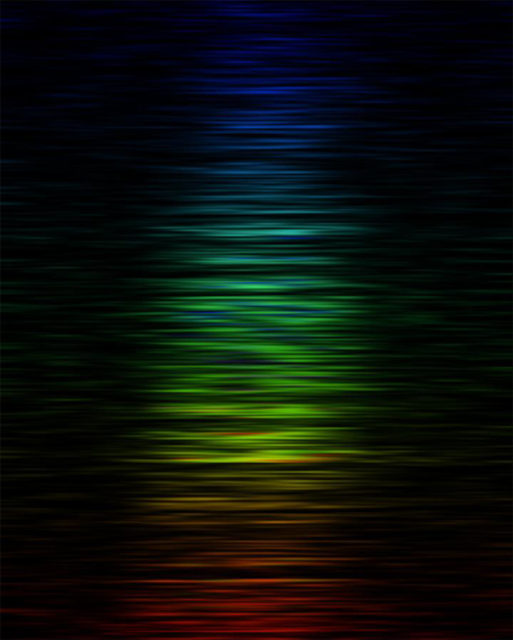Fast radio bursts or FRB’s are brilliant, powerful but quick pulses of electromagnetic energy at radio wavelengths.
Scientists think these rare and mysterious radio pulses, which are said to last no more than 5 milliseconds, travel across the universe from sources billions of light-years away.
In a posting to the Astronomer’s Telegram website, scientists working with the Canadian Hydrogen Intensity Mapping Experiment or CHIME, a radio telescope in British Columbia, Canada, say that they spotted an FRB with a frequency as low as 580 MHz on July 25, 2018.

The intensity of FRB 150807 at different radio frequencies or colors — red corresponds to lower frequencies and blue to higher frequencies. (Dr. Vikram Ravi/Caltech)
The newly discovered low-frequency fast radio burst is called FRB 180725A.
They say this is the first detection of a fast radio burst at radio frequencies below 700 MHz.
In a recent Twitter Tweet, astrophysicist Dr. Emily Petroff, says that most of the FRB’s detected so far have been found at frequencies between 1,000 to 1,500 MHz.
The CHIME team says that since spotting FRB 180725A, they also detected, but so far have not verified, others at even lower frequencies.
The first fast radio burst was discovered in 2007 by David Narkevic, then a West Virginia University, undergraduate student and his teacher Dr. Duncan Lorimer, a Professor of Astronomy at West Virginia University’s Department of Physics and Astronomy.
As the two sifted through data gathered in August 2001 by the 210-foot Parkes radio telescope in Australia, the astronomers discovered a mysterious and powerful burst of radio waves that lasted only a few milliseconds.
They then determined that these bursts represented an entirely new astronomical phenomenon.
Because they are so quick and are apparently randomly produced, less than 40 fast radio bursts have been detected so far.
Here’s what a fast radio burst sounds like…






















Comments are closed.